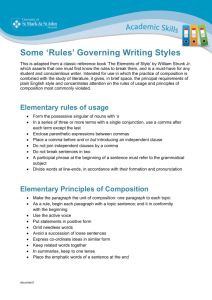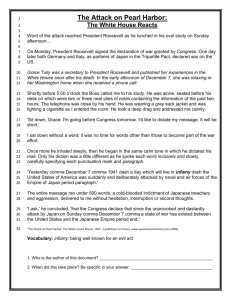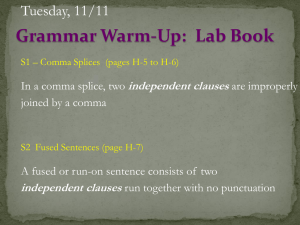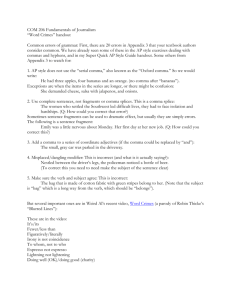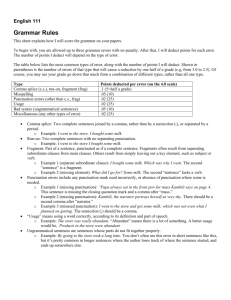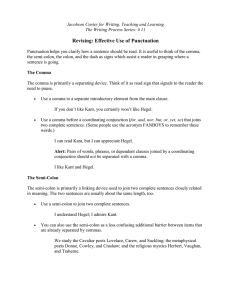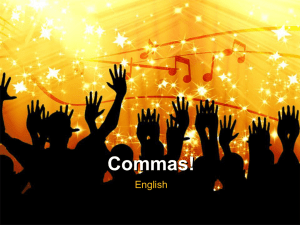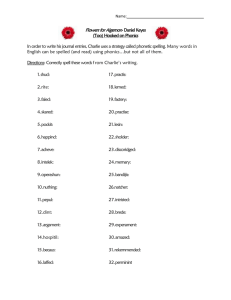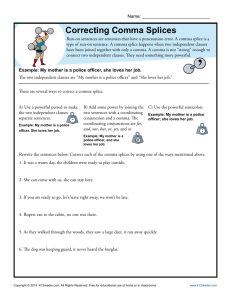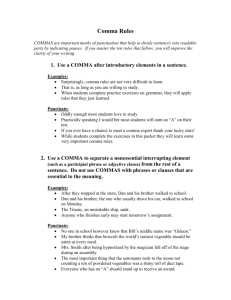Practical Punctuation - Dr. DR Ransdell, University of Arizona
advertisement
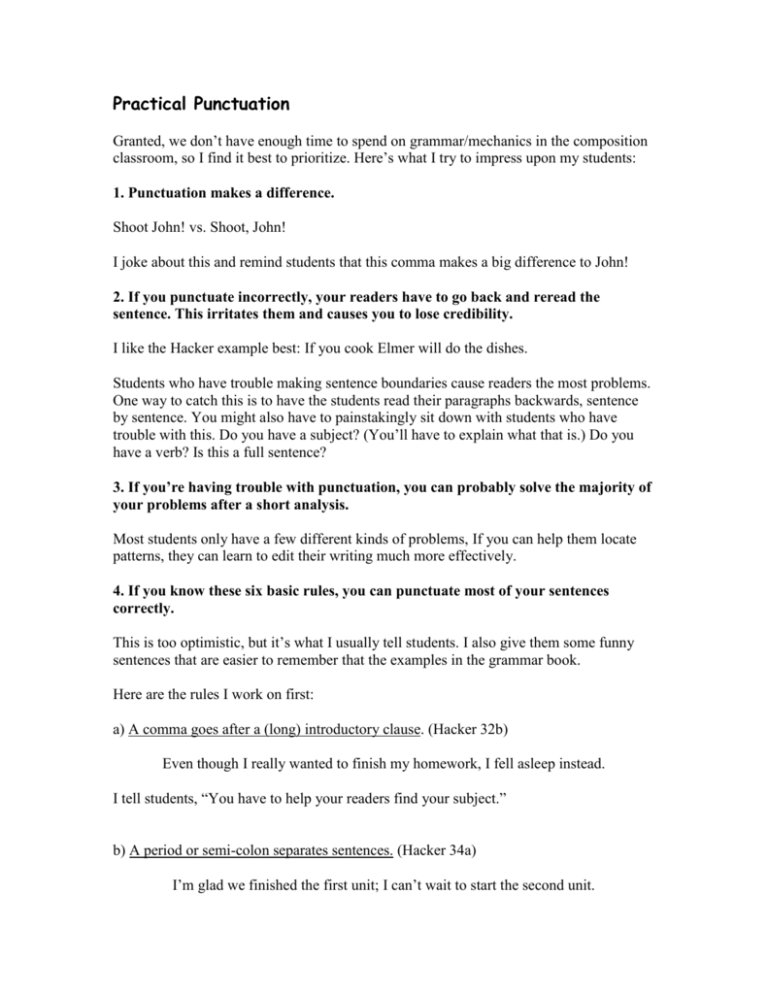
Practical Punctuation Granted, we don’t have enough time to spend on grammar/mechanics in the composition classroom, so I find it best to prioritize. Here’s what I try to impress upon my students: 1. Punctuation makes a difference. Shoot John! vs. Shoot, John! I joke about this and remind students that this comma makes a big difference to John! 2. If you punctuate incorrectly, your readers have to go back and reread the sentence. This irritates them and causes you to lose credibility. I like the Hacker example best: If you cook Elmer will do the dishes. Students who have trouble making sentence boundaries cause readers the most problems. One way to catch this is to have the students read their paragraphs backwards, sentence by sentence. You might also have to painstakingly sit down with students who have trouble with this. Do you have a subject? (You’ll have to explain what that is.) Do you have a verb? Is this a full sentence? 3. If you’re having trouble with punctuation, you can probably solve the majority of your problems after a short analysis. Most students only have a few different kinds of problems, If you can help them locate patterns, they can learn to edit their writing much more effectively. 4. If you know these six basic rules, you can punctuate most of your sentences correctly. This is too optimistic, but it’s what I usually tell students. I also give them some funny sentences that are easier to remember that the examples in the grammar book. Here are the rules I work on first: a) A comma goes after a (long) introductory clause. (Hacker 32b) Even though I really wanted to finish my homework, I fell asleep instead. I tell students, “You have to help your readers find your subject.” b) A period or semi-colon separates sentences. (Hacker 34a) I’m glad we finished the first unit; I can’t wait to start the second unit. The above are the two rules that seem to cause the most problems. If I have the energy, I talk about four more: c) Use a comma between sentences joined with “and” or “but.” (Hacker 32a) I’d like to do my homework, but I have too many phone calls to make. That’s not the whole story since “or,” “nor,” “yet,” and “so” are also coordinating conjunctions, but that’s how I first present it to students. d) Use a comma between items in a series. (Hacker 32c) I worked very hard on my first draft, my second draft, and my final draft. Such commas are omitted in the media all the time, but it’s useful to recognize the elements as separate units. I remind students that without the second comma, the “second draft” and “final draft” might be the same thing, but they want credit for every draft. e) Use a comma around relative clauses that give “unnecessary” information. (32e, 33e) (“Unnecessary” means not needed in terms of identifying the subject.) My brother, who lives in Zürich, loves to cook. The above sentence means: I have one brother, and he happens to live in Zürich. My brother who lives in Zürich loves to cook. This sentence means that I have several brothers, but it’s the one in Zürich who loves to cook. f) Use a semi-colon and comma with transitional expressions between independent clauses. (32f) I’m lazy in the morning; therefore, I set five alarm clocks. Note: Most of us have our own pet peeves when it comes to language use, but if you give students just a few things to work on, you might be able to “sell” your agenda. And if not, then I hope poor John is the shooter not the shot, and that Elmer indeed is a tasty morsel! Other fun examples: Let’s eat Grandpa! vs. Let’s eat, Grandpa! (Jessica Burstrem) I came to school to learn not to drink. vs. I came to school to learn, not to drink. (Ron Lorette) Woman, without her man, is nothing. vs. Woman: without her, man is nothing. (famous example) dr 9/10
